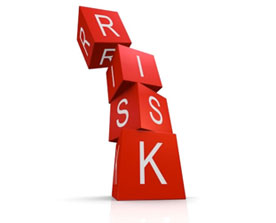THE cost of Solvency 2, the new regulatory framework for life insurers in Europe and the UK — which will be implemented in SA by 2014 — has come as a shock to company boards.
This was according to Deloitte vice-chairman and partner Louis Jordan, who was on a visit this week to brief the accounting firm’s South African life insurance clients about the effect of Solvency 2 so far in Europe, prior to its implementation by end-2012.
London-based indicated earlier this year it would be allocating about £100m towards the implementation of Solvency 2, which Jordan said was similar to that of other insurers.
Historically, SA’s life insurers have been early adopters of regulatory change emanating from the UK and Europe. They will represent a “second wave” of firms to adopt Solvency 2. SA’s Financial Services Board has already set up working groups to establish the regulations for implementation in 2014.
The overhaul is well under way in Europe. Existing solvency rules for life, non-life and reinsurers will be significantly upgraded, and the overhaul will also be seen in insurers applying capital in different ways.
Like the Basel 2 proposals on banking regulations, Solvency 2 has come about because of a need for greater transparency in the life insurance industry, and also for improved consumer protection and improved risk management in the wake of the financial crisis.
Jordan said experience in Europe had shown that boards and nonexecutive directors had been shocked by the total cost of the implementation of Solvency 2. Most insurers in SA had Solvency 2 programmes in place , but these were at a very early stage.
He said the price of actuaries working on contract had “gone through the roof” in Europe, because more were essential for Solvency 2 implementation . There may be a shortage of actuaries in SA once insurers start working on the programme in earnest.
Jordan said the project was made particularly difficult by the complexity of life insurance businesses, where clients need to have access to information and services from insurers and on their products for up to 25 years or more.
Actuaries typically spend many years at one insurer simply because that is how long it takes them to master the systems and books of the company.
So overhauling the systems, products and data of insurers, and increased reporting requirements such as having to provide documentary evidence to regulators for all business decisions, was not a matter of “just parachuting in a few actuaries”, said Jordan.
In addition, many insurers have products, and hardware and software supporting those products from many years before, and typically, only a few people in a company still knew how to operate or change these. Hardware and software companies have also disappeared over time, so back-up support is often not available.
Experience in Europe showed that life insurance companies were not used to implementing projects on the scale of Solvency 2, as opposed to banks that periodically implemented large capital expenditure programmes.




